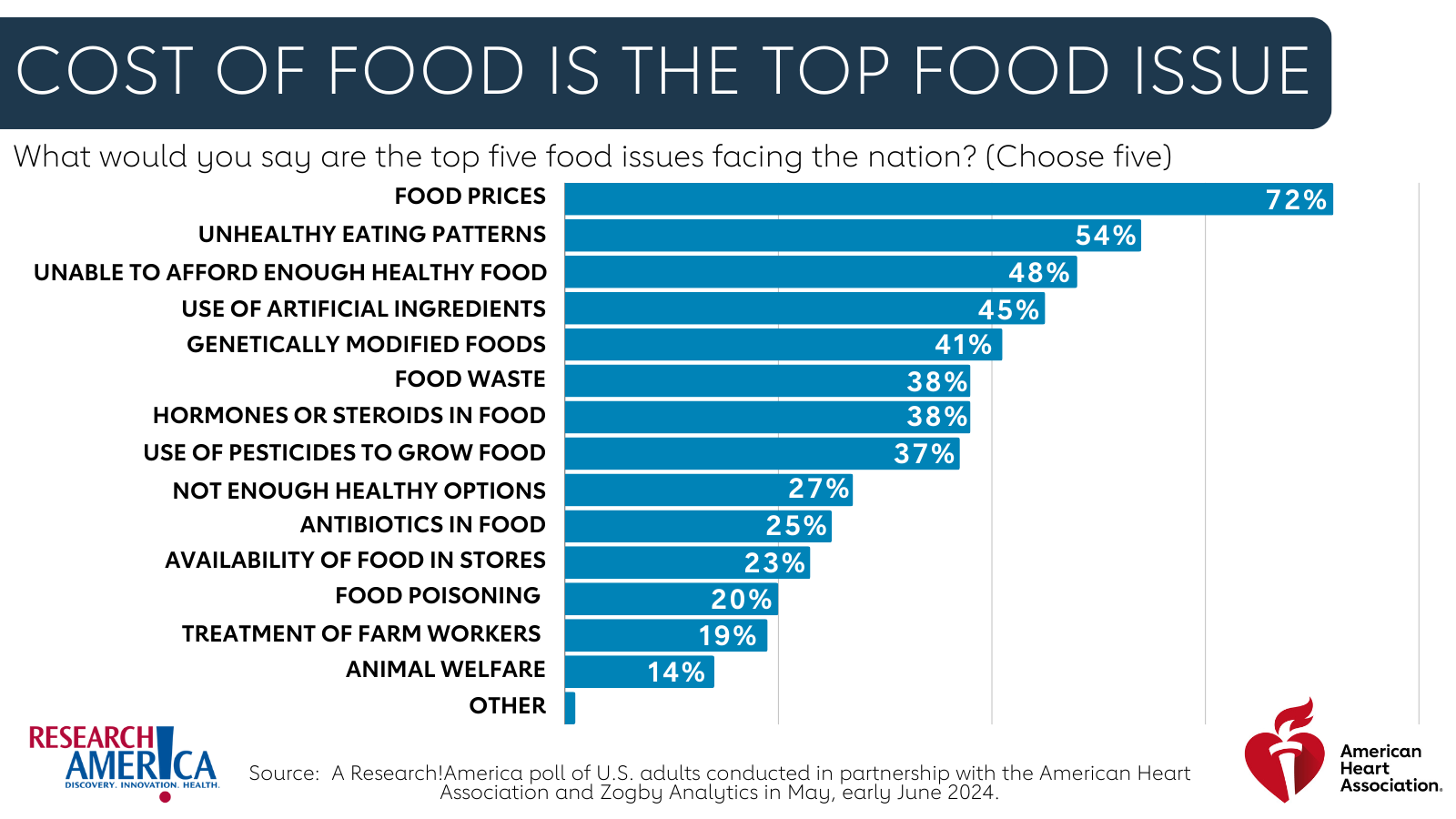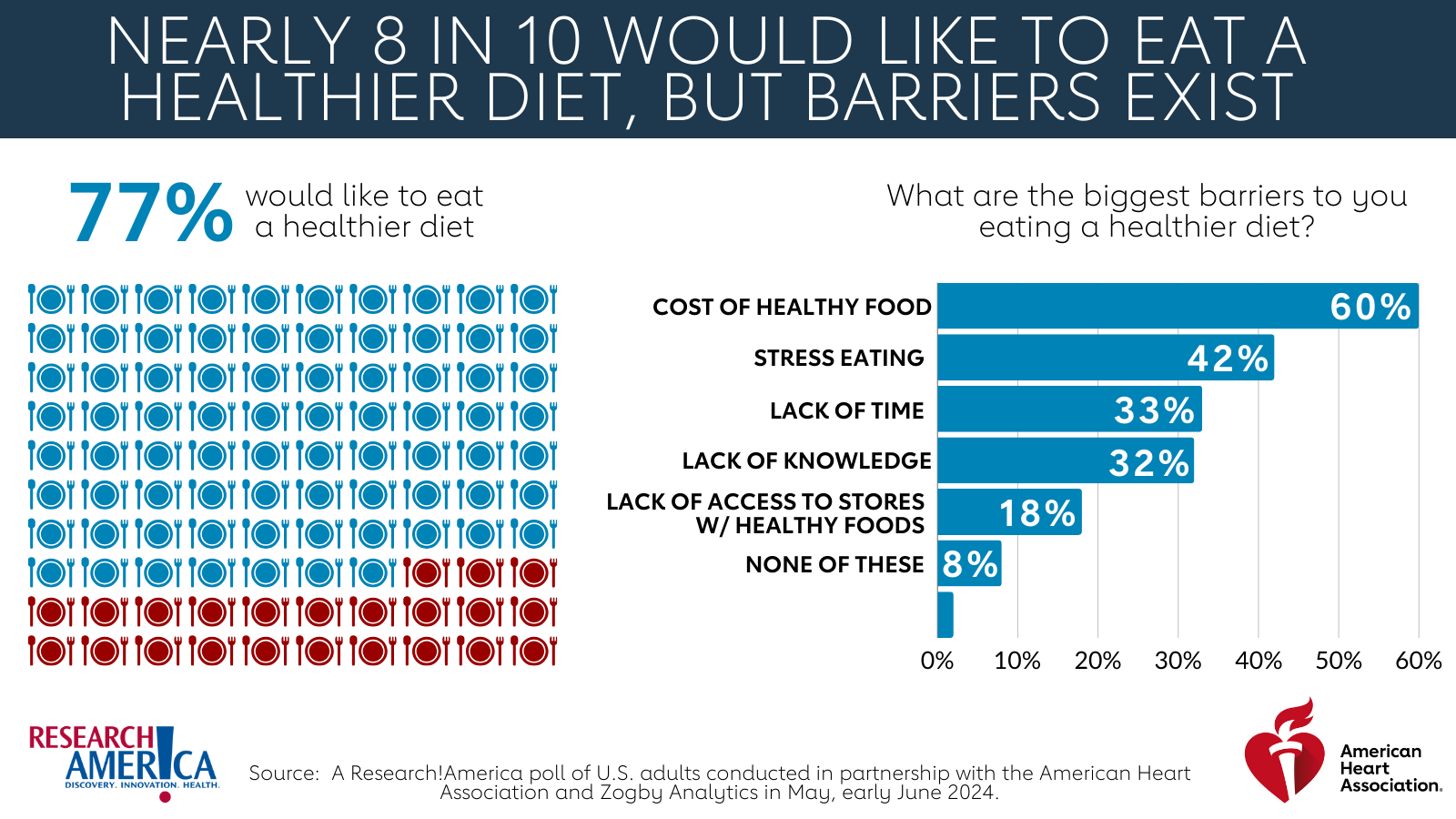Americans Recognize Accessibility and Cost Are Top Challenges in Improving Diet


A June 2024 survey exploring Americans’ attitudes on food, diet, health, and nutrition found that respondents see food price (72%), unhealthy eating patterns (54%), and affordability of healthy foods (48%) as the greatest food issues facing the U.S.
This survey, commissioned by Research!America in partnership with the American Heart Association, surveyed 2,000 U.S. adults on a variety of food and nutrition issues. It shows that the American public is keenly aware of the high level of obesity and unhealthy eating with 91% recognizing unhealthy eating as a problem in the U.S. A strong majority (77%) report that they would like to eat a healthier diet. However, individuals reported the same top issue around food as is facing the nation: cost. Respondents pointed to the cost of healthy food (60%) as the most significant barrier to eating a healthier diet. There are, however, significant differences in how historically underrepresented groups rank the barriers to healthy eating. Nearly 7 in 10 Asian American (66%) and Hispanic (68%) respondents said the cost of healthy food was their biggest barrier to healthy eating. Black respondents were more likely to cite gaps in knowledge about healthy food (38%) and difficulty accessing stores that carry a selection of nutrient-dense foods (25%) as barriers to healthy eating.

Data confirms that accessing nutritious foods is a challenge for some respondents. Strikingly, 21% of respondents said that they or someone close to them has experienced persistent hunger in the past year. Hispanic (32%) and African American (27%) respondents are more likely to have experienced persistent hunger. It is, then, not surprising to learn that, in the past year, nearly half (46%) of respondents said that it was at least somewhat hard for them to regularly obtain and eat nutritious foods with 9% saying very hard, 10% saying hard, and 27% saying somewhat hard. Certain demographic groups expressed a greater difficulty. Hispanics (60%) and African Americans (54%) were more likely to say that it was somewhat hard, hard, or very hard to regularly obtain and eat nutritious foods. Young respondents, those between the ages of 18-24 (56%) and 25-34 (58%), and respondents making less than $75,000 also responded that they experienced difficulty.
Respondents who said accessing food in the past year was challenging found that it was often true (60%) that healthy foods are too expensive. It was also often true for some respondents that stores or food pantries with healthy foods are too far away or hard to reach (31%) and that the store nearest them doesn’t have a lot of healthy food choices (29%). The survey shows immense gaps in access with more than half of respondents (54%) agreeing that we are not making enough progress in making nutritious food accessible and affordable in the U.S.
Research may play a role in addressing the health threats associated with poor nutrition. Some types of research aim to help patients make behavioral changes that can help them overcome health threats such as obesity, hypertension, and diabetes. The survey found that 75% of Americans believe that the U.S. government should fund this research.
Check out our survey database to explore the full dataset from the 2024 June survey on food and nutrition.




